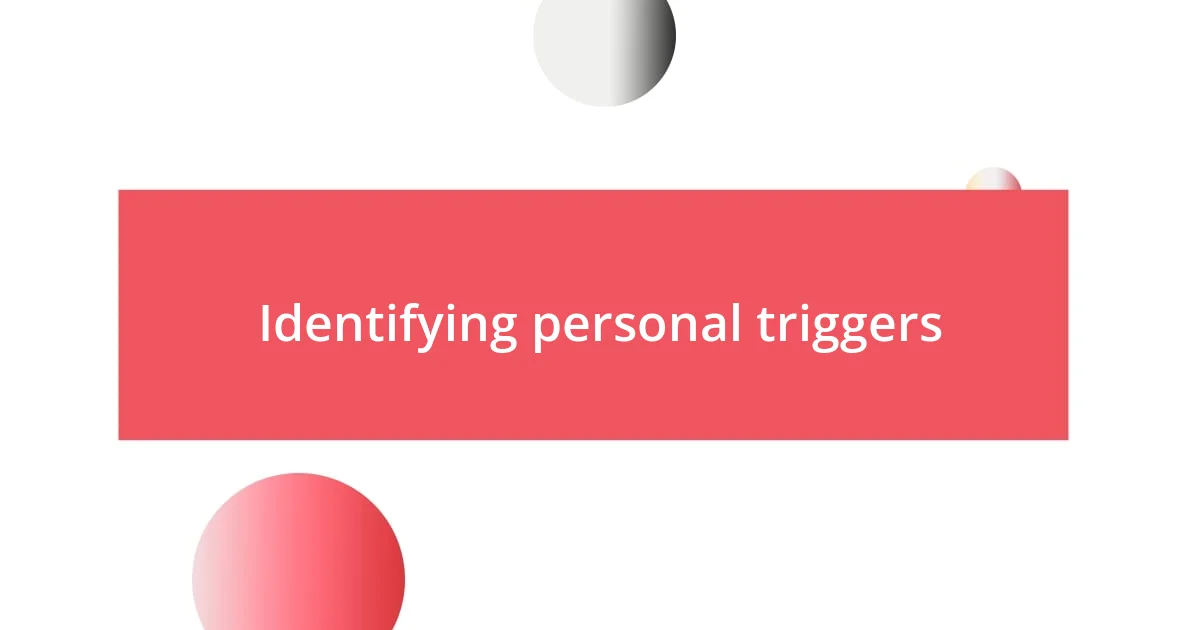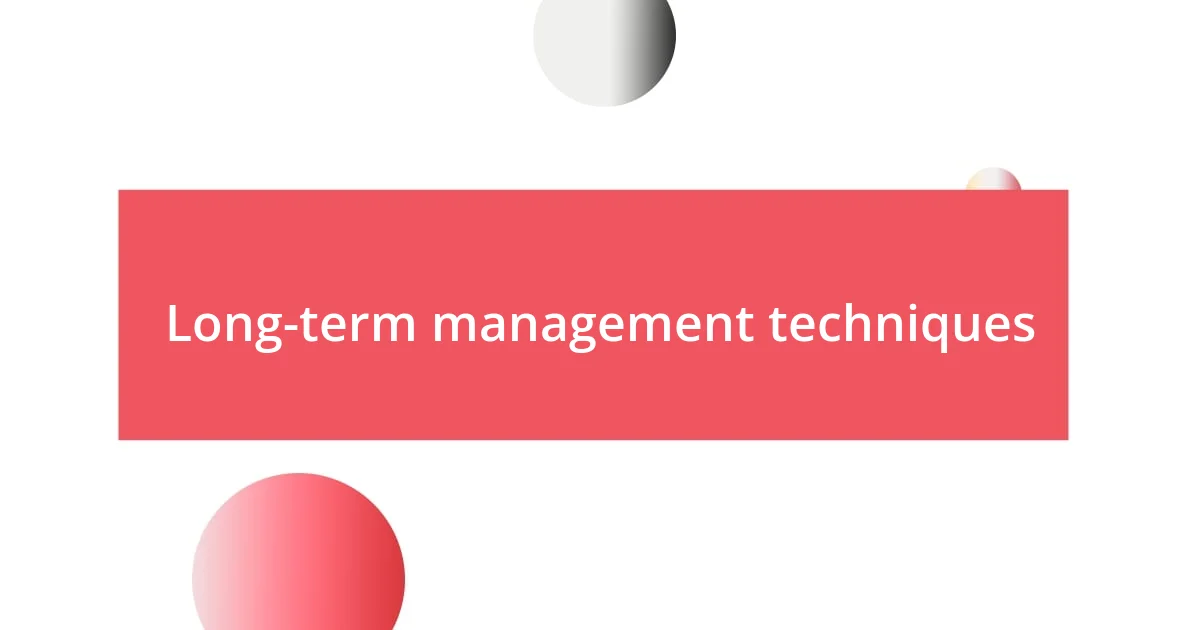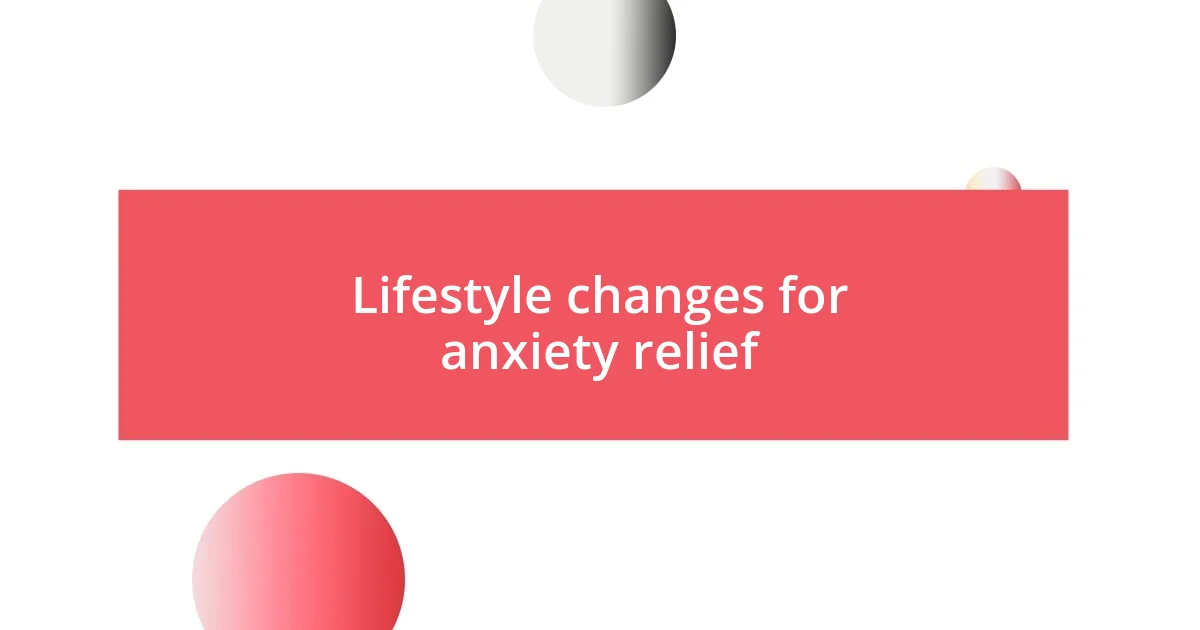Key takeaways:
- Panic attacks involve intense fear and physical symptoms, often triggered by anxiety or stress, highlighting the importance of understanding these experiences.
- Identifying personal triggers and developing coping strategies, such as focused breathing and grounding techniques, can significantly help manage panic attacks.
- Building a support network and seeking professional help, including therapy and community support groups, are crucial steps toward effectively navigating and managing anxiety and panic attacks.

Understanding panic attacks
Panic attacks can feel like a sudden whirlwind, leaving you breathless and bewildered. I remember the first time I experienced one; it was as if my heart was racing towards a finish line I couldn’t see. The overwhelming wave of fear came out of nowhere, making me question, “What is happening to me?”
During a panic attack, your body enters fight-or-flight mode, releasing a flood of adrenaline. It’s fascinating—and terrifying—how our minds can trigger such intense physical responses. Have you ever felt your heartbeat thudding in your chest, making you think you might be in danger? I’ve found myself convinced I was having a heart attack, only to realize later that my mind was playing tricks on me.
Understanding panic attacks means recognizing that they often stem from deep-seated anxiety or stress, creating an intricate web of emotional and physical symptoms. The feeling of helplessness can be overwhelming; I’ve stood frozen in a crowded place, feeling trapped by invisible chains. It’s crucial to remember that while panic attacks can be incredibly frightening, knowing what you’re experiencing can be the first step towards regaining a sense of control.

Identifying personal triggers
Identifying personal triggers is a vital step in managing panic attacks. I noticed that certain situations, like crowded rooms or tight schedules, often seem to spark my anxiety. It’s almost as if my mind was holding onto the memory of previous panic experiences in those contexts, creating a feedback loop of fear. Reflecting on these moments has helped me develop strategies to either avoid or cope with them.
Here are some common triggers to consider:
- Crowded spaces: Places with many people can amplify feelings of suffocation or panic.
- Time constraints: Deadlines or being late can heighten anxiety, triggering a panic response.
- Conflict or tension: Conversations that feel confrontational often leave me feeling on edge.
- Changes in routine: Sudden alterations in daily habits can create a sense of unpredictability.
- Sensory overload: Bright lights, loud noises, or overwhelming smells can make me feel overstimulated and anxious.
By pinpointing my specific triggers, I’ve started to craft a personalized toolkit to address panic when it strikes. Understanding these patterns brings clarity and can significantly lessen the fear that comes with the unknown.

Immediate coping strategies
During a panic attack, I’ve found that focusing on my breath can be incredibly grounding. It’s interesting how something so simple can shift the tide of anxiety. I like to take slow, deliberate breaths—inhaling deeply through my nose for a count of four, holding it for four, and then exhaling slowly through my mouth. This technique not only calms my racing heart but also helps me regain a sense of control over my overwhelmed body.
Another strategy that’s worked wonders for me involves grounding myself through my senses. I often use the 5-4-3-2-1 exercise: I identify five things I can see, four I can touch, three I can hear, two I can smell, and one I can taste. This method brings me back to the present moment, allowing me to detach from the storm of panic swirling in my mind. I can still remember a particularly tough moment in a grocery store; I felt the cool, smoothness of the cart handle and focused on my surroundings, which eased my panic.
Finally, having a mantra can be deceptively powerful. I often repeat phrases like “This too shall pass” or “I am safe” during an attack. In those moments of sheer terror, having something comforting to say to myself is like a lifebuoy tossed into rough waters. One time, while caught in a cycle of panic before a big presentation, this little reminder helped me find my footing again. It’s amazing how linguistic affirmations can reaffirm my reality and provide an anchor when I’m adrift.
| Coping Strategy | Description |
|---|---|
| Focused Breathing | Inhale for four, hold for four, exhale for four to calm the body. |
| Grounding Exercise | Use the 5-4-3-2-1 technique to anchor yourself in the present. |
| Mantras | Repeat comforting phrases to regain confidence and calmness. |

Long-term management techniques
One of the long-term management techniques I’ve found invaluable is incorporating regular physical activity into my routine. When I’m consistent with exercise, I notice a significant decrease in my overall anxiety levels. It’s almost like my body processes stress more effectively. For instance, I recall one particularly overwhelming week; fitting in a walk or a short jog helped clear my mind and put me in a better mood, making panic attacks feel less looming in my life.
Mindfulness meditation is another technique that’s made a difference for me. Initially, I was skeptical—how could sitting still possibly help during chaotic moments? But, when I committed to just a few minutes each day, I started to observe how I react to stressors differently. I remember one morning, fully immersed in a breathing exercise, feeling the tension melt away. It’s fascinating how cultivating presence can equip you with tools to face panic more calmly when it strikes unexpectedly.
Establishing a support system is crucial too; I often find solace in talking to friends or family who understand my experiences. Have you ever shared your struggles with someone and felt an immediate weight lift? I can still vividly remember a supportive chat I had with a close friend during a particularly tough time, where just expressing my feelings helped demystify my anxiety. Building that trust not only fosters connection but reminds me I’m not alone in this journey.

Lifestyle changes for anxiety relief
Making some intentional lifestyle changes has been a game changer for my anxiety. One simple yet profound adjustment has been my diet. I’ve found that reducing caffeine and opting for more whole foods can significantly impact how I feel. Maybe you’ve noticed, too, how those jittery feelings can escalate when I overindulge in coffee. Instead, I try focusing on balancing my meals with plenty of fruits, veggies, and whole grains. I remember a time when I switched to herbal tea instead of my usual espresso; it was as if my body finally exhaled a sigh of relief.
Sleep hygiene is another critical piece of the puzzle that I’ve learned to prioritize. I used to dismiss the importance of quality sleep, but now, I realize how much it affects my mood and anxiety levels. I started a bedtime routine that includes turning off screens an hour before sleep and indulging in calming activities like reading or gentle yoga. There’s something about that consistent wind-down that truly cradles me into a better state of mind. Have you ever noticed how a good night’s rest can make the world feel just a little less daunting? It’s like a reset button for my mental well-being.
Finally, I’ve found that setting boundaries in my social life significantly helps manage my anxiety. I used to feel obligated to attend every gathering, but that only heightened my stress. Now, I give myself permission to say no when I need that time to recharge. I recall missing a big event recently, and instead, cozying up at home with a good book. It felt liberating. I think it’s essential to recognize our limits and create space for self-care, don’t you? Doing what feels right for me has been an empowering step toward lasting relief from anxiety.

Seeking professional help
Seeking professional help can be a pivotal step in managing panic attacks. I remember the first time I walked into a therapist’s office; I was terrified yet hopeful. With each session, I felt more empowered to unravel my thoughts and anxieties. Talking to a trained psychologist not only provided me with coping strategies but also gave me a safe space to share my feelings without judgment. Isn’t it reassuring to have someone validate your experiences?
Therapy isn’t one-size-fits-all, though. I’ve explored various approaches, from cognitive behavioral therapy to mindfulness-based techniques. Each method offered unique insights that resonated with me. For example, in one session focused on cognitive restructuring, I learned to reframe my catastrophic thoughts. The lightbulb moment came when I realized I had the power to challenge my own perspective. Have you ever paused to think about how powerful your thoughts can be? I learned that with enough practice, I could shift the narrative.
Medication can also be beneficial for some, as I’ve seen in friends who’ve combined it with therapy. The crux of seeking help lies in finding what feels right for you. When my friend began medication, she explained how it helped her find a baseline from which to work on her anxiety. Observing her transformation made me realize that feeling stuck isn’t the only option. If you’re unsure, consider reaching out. You might discover resources and strategies capable of enriching your journey toward calmness.

Building a support network
Building a support network is something I’ve found essential in navigating panic attacks. When I first opened up about my struggles to a few close friends, I was surprised by their responses. They shared their own experiences, which made me realize I wasn’t alone in this journey. Have you ever felt that sense of relief when someone else understands exactly what you’re going through? It’s like a weight lifts off your shoulders just knowing you have allies who get it.
Establishing a network doesn’t have to be overwhelming. I began with a handful of trusted friends and gradually expanded to include a couple of family members and acquaintances who resonate with my feelings. The key is to surround yourself with people who are not only supportive but also empathetic. I remember those moments when friends would text me just to check in; those small gestures meant the world to me. Isn’t it incredible how a simple message can remind you that you’re not facing your battles alone?
It’s also important to engage with others who share similar experiences. I took a brave step and joined a local support group, where I met wonderful individuals who understand panic attacks on a personal level. Hearing their stories helped me feel a sense of belonging, and together we exchanged tips and tools that worked for us. Sometimes, it helps to hear, “I’ve been there too.” Have you considered joining a group or finding online communities? Creating connections like these can greatly enhance not just your understanding, but also your journey toward healing.















